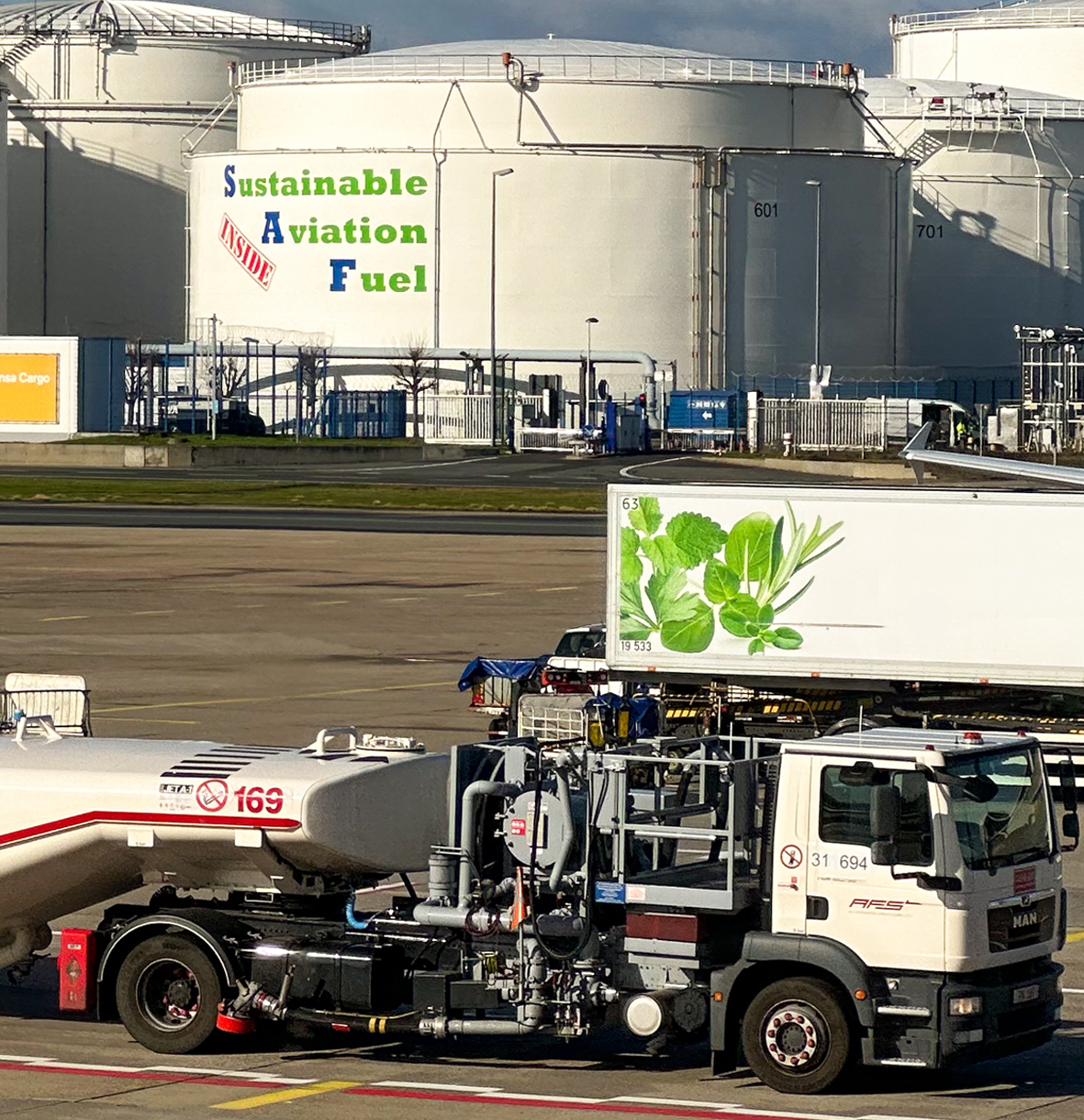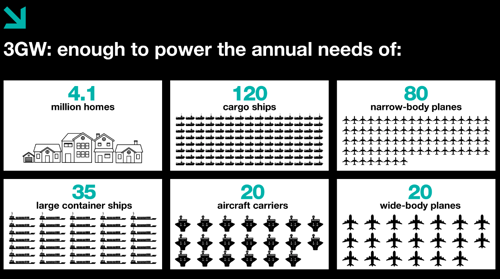Green jet fuel: Promise or challenge for aviation's future?

The Nordic region’s investment in Power-to-X technology has raised the bar, but do the numbers really stack up?
In a world crying out for Sustainable Aviation Fuels (SAFs), it was hard not to get excited by a story about a "massive" Power-to-X (P2X) project to use wind energy to produce hydrogen (see Figure 1).
Announced in February 2023, a project led by Nordic renewable energy producer OX2 is assessing the feasibility of transforming Finland’s Swedish-speaking Åland archipelago into a "gigascale" offshore wind facility.
The power would then be used to produce 3 GW of hydrogen and e-fuels as part of what is being described as a Baltic Sea Hydrogen Collector.
With Denmark’s Maersk onboard, and even some German backing, it’s a truly north European venture that could transform Åland into the region’s biggest green hub and has the potential to become much, much bigger.
It sounds impressive. But how much is 3 GW?

Figure 1
Game-changer on land and water
In shipping terms a three-gigawatt source of energy is a lot. It’s enough to power 20 aircraft carriers (see Figure 2) – a total tonnage of 2 million – which explains why Maersk has taken a major interest:
“The global shipping industry is clamouring for green e-fuel on a large scale, which makes the timing of this feasibility study perfect.”
And in household terms, it is enough to take care of the energy needs of 4.1 million homes.
In a country like Denmark or Norway, it’s enough to power every single household.
How hydrogen-focused MROs are preparing aviation for the future
In the air, just a light breeze
But how much is 3 GW compared to the energy required by global aviation. Well, converted into green hydrogen fuel, it could keep 20 wide-body aircraft in the air, or 80 narrow-body passenger aircraft (see Figure 2).
So, given there are an estimated 90,000 to 100,000 flights every day, the world would need around 1,000 sources producing 3 GW of alternative power to achieve zero emissions in the aviation industry – and it goes without saying that it has other energy concerns to take care of.

Figure 2
Roughly speaking, the world would need to produce three terawatts of alternative energy and convert it into green fuel at Power-to-X (P2X) plants.
Given that 2023 saw global wind energy capacity exceed 1 TW for the first time, the world has a long, long way to go before it can power itself, and the aviation industry, sustainably.
Crying out for a new Pittsburgh
Society can pat itself on the back for powering its washing machines, toasters and fridges in a sustainable fashion, but its global footprint is a drop in the ocean compared to aviation.
The midway point of this century has been marked by many countries as a year to achieve zero net emissions, but by then aviation, if unmitigated, will be responsible for as much as 22 percent of climate action, according to a MPP/CST report. Domestically, some countries are beginning to make inroads, but globally we are collectively failing.
But could P2X plants make a difference? If there were enough of them, it would be theoretically impossible.
Clearly what the nascent industry needs is another Andrew Carnegie, the 19th century magnate who against all the odds took US steel production into the stratosphere, along with the skyscrapers that shaped the country.
According to a 2023 report carried out by Grand View Research, the global P2X market will be worth $645.3 million by 2030 thanks to an anticipated CAGR of 10.6 percent.
Hydrogen's coming strong, but is it for the long-haul?
Nordic region’s pipe dream
Another 2023 study, carried out by Wärtsilä, assessed the potential of P2X fuels to handle future power needs.
It assessed the cost of both producing green hydrogen and three derivatives – ammonia, synthetic methane and methanol – and storing them.
It concludes that while green hydrogen is the cheapest to produce, it is by far the most expensive to transport and store, making it the most expensive option.
Airports with their own production plants and storage facilities would accordingly have a headstart harnessing the potential of the P2X fuels.
Not a perfect process yet
For the time being, however, P2X fuels remain inefficient to produce. When the alternative energy undergoes electrolysis in ultra-pure water to produce the hydrogen, around half the energy is lost.
Nevertheless, Danish company Dynelectro claimed in April to have improved the process by 25 percent, noting:
“Hydrogen will play a crucial role in the parts of the transport sector of the future that are not possible to electrify, including aviation and shipping. It is crucial that we step on the accelerator and succeed with this transition if we want to have green air under our wings soon.”
To make green hydrogen fuel, C02 is extracted from air. When the fuel is burned, the CO2 is released back, so at a rate of net zero emissions. The same is true of the nitrogen used to mix with the hydrogen to make green ammonia.
Rise of the vertiports: a look at recent developments concerning the futuristic air hubs
Denmark leading the way
Certainly Denmark is a trailblazer when it comes to P2X fuels, and by 2030 it is hopeful it will be producing enough to fuel all domestic flights.
However, its other 2030 goals for electrolysis capacity highlight the significant hurdles the technology still faces before it can fully transform global aviation. Denmark plans to expand its electrolysis capacity to 4–6 GW, which would sustain 27–40 wide-body aircraft or 108–160 narrow-body aircraft.
While this is an impressive step forward, scaling it globally illustrates the challenge: multiplying this capacity across roughly 200 countries would fuel about 30 percent of all global passenger flights, or 32,000 aircraft.
Even on a per capita basis, the numbers underline the disparity in resources. While Denmark’s progress could theoretically cover double the world’s aviation needs if every country followed suit, many nations lack the renewable energy infrastructure to replicate its efforts. And besides, other industries will want to use the green energy produced at P2X plants, so competition will be fierce, further complicating the transition.
TAKEAWAY:
Denmark’s target to produce up to 6 GW of green hydrogen fuel by 2030 demonstrates what is achievable with strong commitments to renewable energy. Clearly there is a lot of potential in P2X, if more countries with bounteous supplies of alternative energy follow Denmark’s example. However, replicating this on a global scale would require massive investments, international collaboration, and significant improvements in efficiency and cost reduction to meet the demands of aviation and other competing industries.
Cover image credit: Ubahnverleih